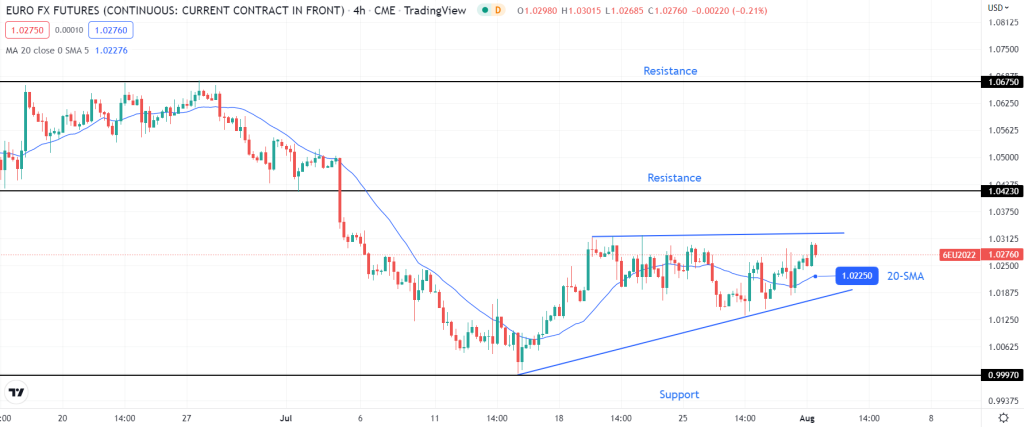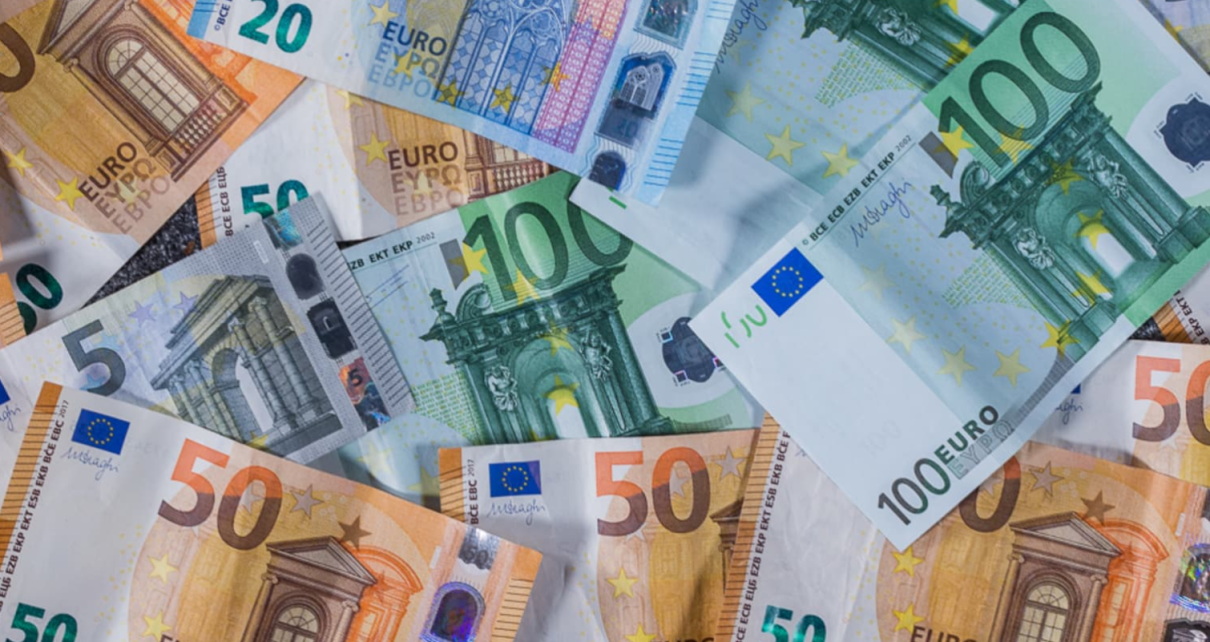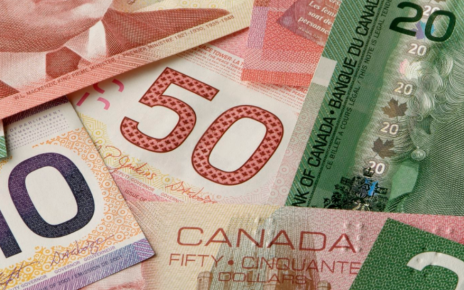- A lower-than-expected German retail sales report erases intraday gains for 6E.
- Bulls are not convinced with recent hawkish Fed statements amid a stable Eurozone GDP.
- US dollar bearishness paused amid a sluggish session due to Eurozone recession risks and China-US skirmishes.
- Intraday trading may be fueled by Eurozone Manufacturing PMI and Unemployment Rate Reports.
A disappointing German retail sales report, released early Monday morning, erased intraday gains in Euro (6E) futures to 1.0240. A moderate wave of risk aversion and the sluggish European session also contributed to the renewed decline in the Euro.
According to the previous consensus estimates, retail sales in Germany fell 8.8% YoY in June.
The Eurozone’s gross domestic product (GDP) increased unexpectedly on Friday. However, the hopes of recovery are not exceptionally high. The GDP figures came in at +0.7% QoQ, compared to the previously expected 0.2% and 0.6%.
In addition, Russia could stop gas supplies to Latvia, which could also affect Euro prices. Further bearish pressure on the Euro futures is likely to have been exerted by recent hawkish comments from Minneapolis Fed Chairman Neil Kashkari.
The pause in the risk-on mode of the market has increased the demand for the US dollar to be a safe haven asset. There could be a connection between the poor sentiment and the PMI of China, as well as Beijing’s warnings to the US ahead of the visit to Asia by US Spokesman Nancy Pelosi.
In line with the sentiment, the S&P 500 futures have fallen 0.45% from their monthly high, while the US 10-year Treasury yield is down three basis points (bps) to 2.67% at the time of publication.
Before the US ISM Manufacturing PMI for July, traders could be interested in the Eurozone S&P Global PMI for July and the June Unemployment Rate.
Euro futures (6E) technical analysis:

The 4-hour price chart of the Euro reveals that the price is moving within the rising wedge pattern. Recent candle formations look relatively small in size indicating a period of consolidation with no clear bias. However, the price manages to stay above the 20-period SMA. Moreover, the RSI value is above the 50 mark, another sign of bullishness. Still, it is prudent to watch the wedge pattern breakout to find a decent trading opportunity.
If the price breaks out to the upside, we can see the Euro futures gaining towards the horizontal level of 1.0423. The next resistance for the bulls lies at 1.0675. On the flip side, if the price breaks the wedge on the downside, it may plunge towards the 0.99970 support.





